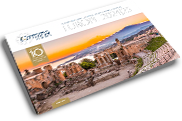4 reasons why you should visit Montenegro
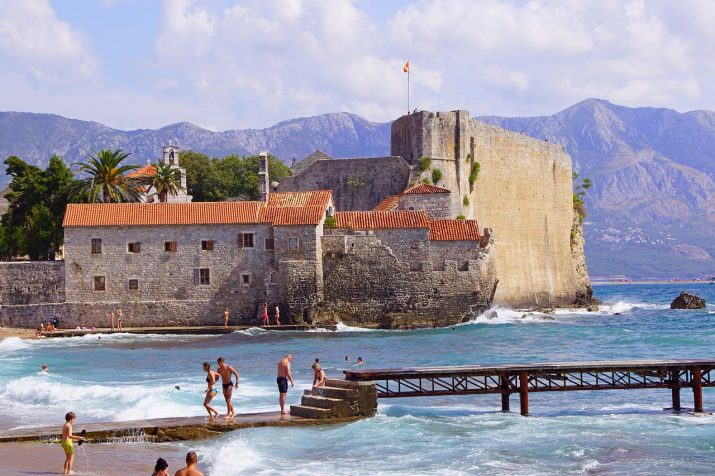
Despite being one of the smallest countries in Europe, Montenegro offers travellers an enticing destination. It is full of gorgeous scenery from the mountains of the Dinaric Alps to the stunning Adriatic coastline and the inland fjord of the Bay of Kotor. From the mountainous Durmitor National Park to the expanses of Lake Skadar. The country offers an amazing variety of impressive natural surroundings. And with that, a number of reasons why you should visit Montenegro.
There are numerous towns along the coastline from Budva to Ulcinj that offer atmospheric seaside settings. With historic walled villages along the shores of the gorgeous Bay of Kotor to explore. The country offers an intriguing menu of food from land and sea. As well as a rich architectural history from its days of being ruled by numerous foreign empires.
Here are four reasons why you should visit Montenegro on your European discovery.
Stunning Natural Beauty
Montenegro offers one of the most beautiful coastlines in Europe. The Adriatic shores are dotted with scenic towns like Budva, the exclusive island village resort of Sveti Stefan and Ulcinj with its minaret dotted skyline. The southernmost fjord in Europe is known as the Bay of Kotor. It curves inland from the coast, with stunning landscapes where the sea meets the mountains. And, is dotted by old walled villages like Kotor and Perast.
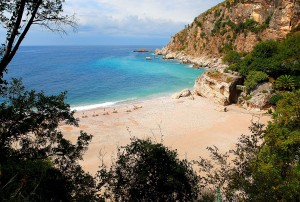
Paradise corner, Adriatic sea, Montenegro
An hour’s boat ride from Herceg Novi will bring you to the Lustica Peninsula. This is where the Blue Grotto Sea Cave’s luminous blue waters offer an amazing setting for swimming and snorkelling.
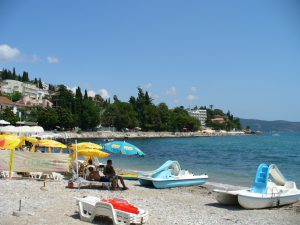
Paddle boats at Herceg Novi
Montenegro also shares Lake Skadar with Albania. The beautiful lake with its scenic fortresses and monasteries is best explored by boat. It offers beaches for swimming, as well as hiking, and kayaking. Bird watchers can find unique species like the Dalmatian Pelican or Pygmy Cormorant.
The northern area of the country is home to Durmitor National Park. Host to a wonderland of majestic landscapes including the glacial Black Lake, and the Tara River Canyon. The canyon is the second deepest in the world and offers white-water rafting. Hikers can also enjoy the mountain peaks like Bobotov Kuk.
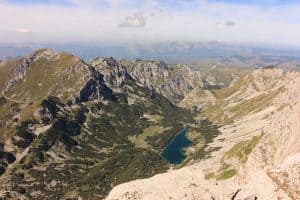
Amazing mountain ranges of Bobotov Kuk, Montenegro
Historic Towns and Villages
The Adriatic coastline of Montenegro offers a string of charming historic towns. Many of them are amazing destinations that are perfect reasons why you would want to visit Montenegro. Budva is the most popular, with an alluring combination of walled old town to explore, numerous beaches to choose from and a dynamic nightlife scene.
A short distance south is the incredibly photogenic island village of Sveti Stefan. It is connected to the mainland by a narrow isthmus. Today it is an exclusive private island home to the Aman Sveti Stefan resort.
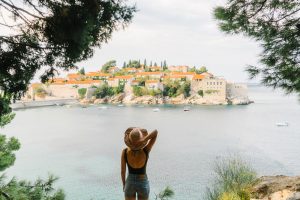
Sveti Stefan island, Montenegro
Southernmost of the coastal towns is Ulcinj, close to the Albanian border. It displays its Ottoman heritage with its mosques and minarets. The town adds spice to the town’s skyline, along with the longest sand beach in Europe.
Nestled along the Bay of Kotor are several gems such as the beautiful Kotor and the charming village of Perast. Both have old towns which, in fact, have UNESCO World Heritage Site status. They reflect the centuries of Venetian rule in the area in their architecture.
Kotor has a fairy tale quality to its old town, with its defensive walls and mountains rearing up behind. The Cathedral of Saint Tryphon is Europe’s oldest, the main attraction, and a must-see visit, of the old town. We recommend hiking up to the San Giovanni Fortress for sublime views.
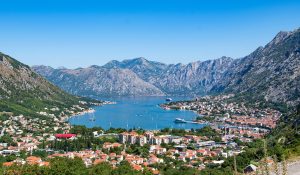
The bay of Kotor in Montenegro
Perast is a delight to explore, with many palaces and churches lining its single main street. Just offshore are the two islets of Our Lady of the Rocks and St. George. The Our Lady church was established by fisherman who found an icon of the Virgin Mary. They built the island using rocks and materials from old shipwrecks.
Mouth-watering Food & Wine
Not surprisingly, Montenegro’s has a diverse historical heritage. The country’s time spent as part of the Ottoman, Austro-Hungarian, and Venetian Empires, has left a cultural legacy impacting the local cuisine. The fresh local produce is a delicacy and perfect reason why you should visit. Montenegro’s Adriatic coastline ensures a bounty of delicious seafood dishes. Lake Skadar provides fresh fish choices like carp and the small fish called bleak which are endemic to the lake.

If you are looking for a quick and easy breakfast or typically Montenegrin snack, look no further than burek. Photo from Wikimedia
You’ll find tasty meat entrees made from mutton and pork including sausages, prosciutto, and lamb steaks. There is also a wide selection of cheeses to sample. The country produces its own olive oil. In fact, it is home to the oldest olive producing tree in Europe, said to be over 2,000 years old, near the town of Stari Bar.
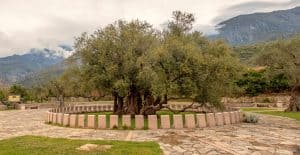
The oldest olive oil tree in the world – over 2000 years old. Photo from Wikimedia.
Unique beverages to try include the local honey wine. There are vineyards in the southern area of the country near the capital of Podgorica and Lake Skadar. Red wines are the best known, made from the native red grape variety called Vranac.
Diverse Art & Architecture
Although only an independent country since 2006, Montenegro has a long history manifested by its intriguing architecture. The centuries of Venetian rule along the Adriatic coast have left an architectural legacy, making it an important reason why you should visit Montenegro. There are many Venetian inspired buildings in the walled medieval towns of Kotor and Perast around the Bay of Kotor. Kotor’s Cathedral of Saint Tryphon is representative of Roman architecture and was built in 1166 atop a 9th century temple. Its Treasury houses religious artworks from the 14th to the 20 centuries.
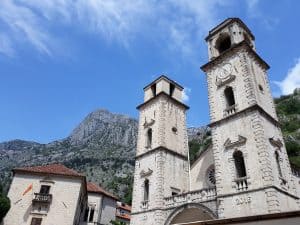
The Cathedral of Saint Tryphon in Kotor
Additionally, Montenegro has a deep religious history with a multitude of monasteries worthy of discovering. The most spectacularly situated is the Ostrog Monastery, carved out of a cliff face some 900 meters high. It features amazing, frescoed cave walls in its two churches. Other important religious monuments include the Our Lady of the Rocks church at Perast, and the Cetinje Monastery built in the country’s former royal capital of Cetinje, inland from the coast.

The amazing Ostrog Monastery carved in the cliff in Ostroška Greda
The Art Gallery in Cetinje houses the most important art collections in the country. The works range from icons and paintings to preserved church frescoes. The capital of Podgorica is home to the Museums and Galleries of Podgorica. Here is housed many historical and folk-art collections as well as antiquities excavated from the former Roman town of Doclea, found on the city’s northern edge.

